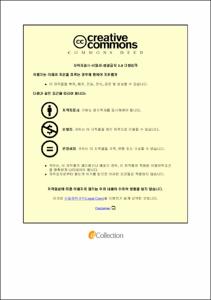Protective Effects of Phenolic Bioactive Molecules against Particulate Matter-Induced Skin Cell Damage
- Alternative Title
- 미세먼지로 인한 피부세포 손상에 대한 페놀성 화합물의 보호효과
- Abstract
- Diphlorethohydroxycarmalol (DPHC), a phenolic-based compound is abundant in the brown alga, which shows high potential for antioxidative stress. Here, the protective effect of DPHC on PM2.5-induced skin cell damage was evaluated both in vitro and in vivo. First of all, DPHC scavenged PM2.5-induced intracellular ROS, which caused macromolecule damage such as DNA, protein, and lipids in HaCaT keratinocytes and HR-1 hairless mice. In addition, increased epidermal height in PM2.5-exposed mice’s dorsal skin was prevented by treatment with DPHC. DPHC also reversed PM2.5-induced organelles dysfunction, including ER stress, mitochondrial depolarization, and autophagy activation. Moreover, PM2.5 induced keratinocytes apoptosis by activation of the MAPK signaling pathway. However, DPHC inhibited the phosphorylation of MAPK signaling-related proteins, ERK, p38, and JNK, thus reducing apoptotic bodies. And the MAPK inhibitors also proved that DPHC protected skin cells from PM2.5-induced apoptosis via the MAPK signaling pathway. Therefore, DPHC regulated the activation of MAPK signaling may play a vital role in PM2.5-induced skin injury.
The toxicity of particulate matter towards the epidermis has been well-established in many epidemiological studies; it is manifested in various forms, including cancer, aging, and skin loss. In this study, it aimed to show the mechanism underlying the protective effects of eckol, a phlorotannin isolated from brown seaweed, towards human HaCaT keratinocytes from PM2.5-induced cell death. First, to elucidate the underlying mechanism of toxicity of PM2.5, I checked the ROS level, which contributed significantly to cell damage. Experimental data indicated that excessive ROS caused damage to lipids, proteins, and DNA and induced mitochondrial dysfunction. Furthermore, eckol decreased ROS generation, ensuring the stability of molecules, and maintaining a steady mitochondrial state. The western blot analysis showed that PM2.5 promoted apoptosis-related protein levels and activated MAPK signaling pathway, whereas eckol protected cells from apoptosis by inhibiting MAPK signaling pathway. This was further reinforced by detailed investigations using MAPK inhibitors. Thus, our results demonstrated that inhibition of PM2.5-induced cell apoptosis by eckol was through the MAPK signaling pathway.
Purpurogallin, a natural phenol obtainable from oak nutgalls, has shown antioxidant, antiproliferative, and anti-inflammatory effects. Recently, in addition to UVB radiation inducing cell apoptosis via oxidative stress, PM2.5 was shown to trigger excessive production of reactive oxygen species. According to the study, UVB radiation and PM2.5 synergistically damaged human HaCaT keratinocytes, leading to disrupted cellular DNA, lipids, and mitochondrial depolarization. Purpurogallin protected HaCaT cells against apoptosis which was induced by UVB radiation and/or PM2.5. These results indicate that purpurogallin possesses antioxidant effects and protects cells from damage and apoptosis induced by UVB radiation and PM2.5.
- Issued Date
- 2023
- Awarded Date
- 2023-02
- Type
- Dissertation
- Alternative Author(s)
- 진오현
- Affiliation
- 제주대학교 대학원
- Department
- 대학원 의학과
- Advisor
- Hyun, Jin Won
- Table Of Contents
- PART I 1
ABSTRACT 2
INTRODUCTION 3
RESULTS 4
DISCUSSION 19
PART II 22
ABSTRACT 23
INTRODUCTION 24
RESULTS 25
DISCUSSION 37
PART III 39
ABSTRACT 40
INTRODUCTION 41
RESULTS 42
DISCUSSION 52
CONCLUSION 53
MATERIALS AND METHODS 54
REFERENCES 59
ACKNOWLEDGMENTS 71
致 谢 73
- Degree
- Doctor
- Publisher
- 제주대학교 대학원
- Citation
- Zhen, Ao Xuan. (2023). Protective Effects of Phenolic Bioactive Molecules against Particulate Matter-Induced Skin Cell Damage.
- Appears in Collections:
- General Graduate School > Medicine
- 파일 목록
-
-
Download
 Protective Effects of Phenolic Bioactive Molecules against Particulate Matter-Induced Skin Cell Dama.pdf
기타 데이터 / 1.96 MB / Adobe PDF
Protective Effects of Phenolic Bioactive Molecules against Particulate Matter-Induced Skin Cell Dama.pdf
기타 데이터 / 1.96 MB / Adobe PDF
-
Items in Repository are protected by copyright, with all rights reserved, unless otherwise indicated.